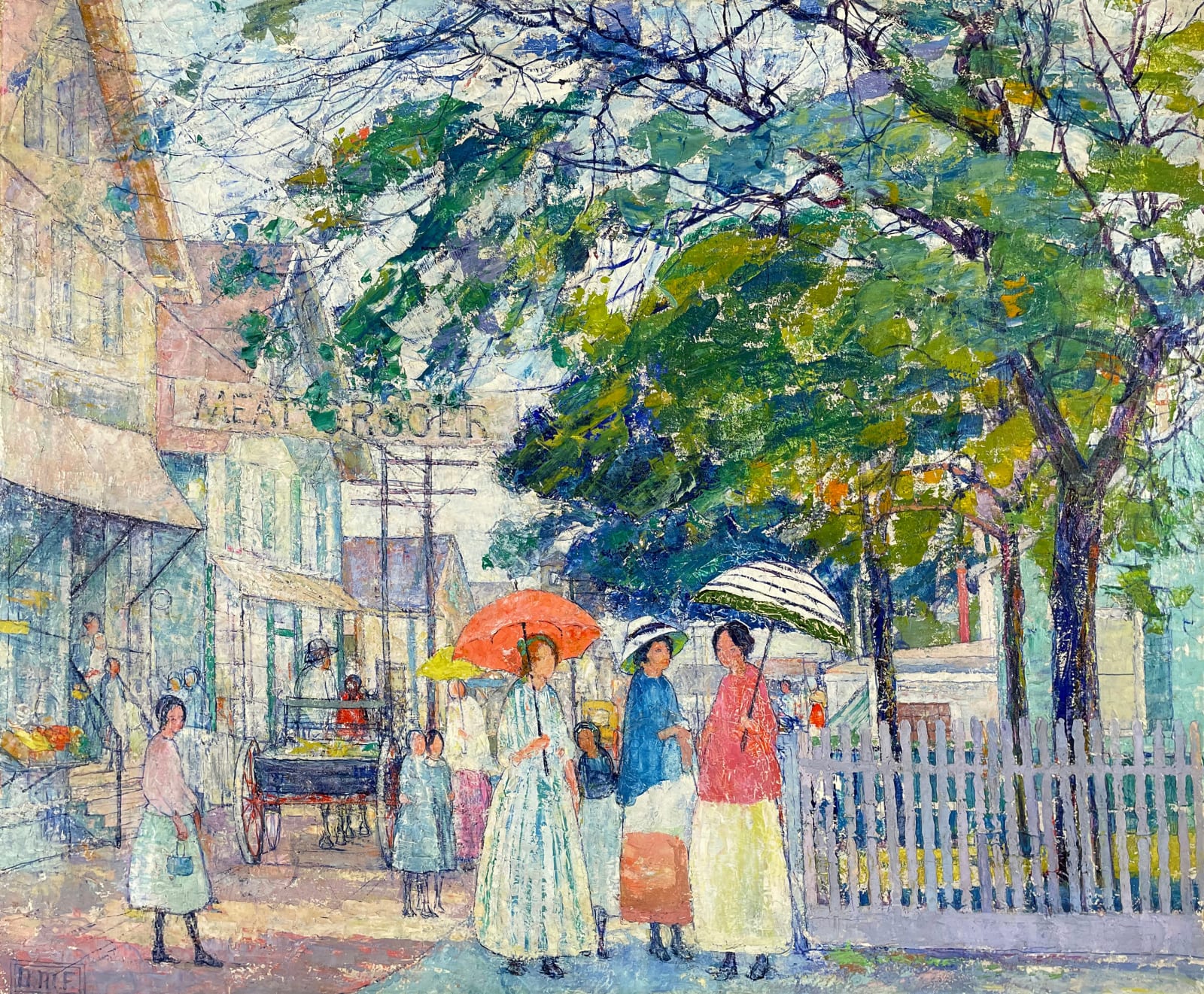Nancy Maybin Ferguson 1872-1967
Framed dimensions: 36 1/4 x 42 1/4 inches
Like many of the women who enrolled at PAFA in the late nineteenth and early twentieth century, Nancy Maybin Ferguson began her artistic training at the Philadelphia School of Design for Women, where she studied with Robert Henri; although she credited Elliot Daingerfield as a primary influence in painting instruction. She decided to take classes at the Academy after a trip to Europe around 1899, where she became interested in portraiture, as she knew she would benefit from PAFA’s rigorous emphasis on drawing and figure study. Ferguson attended the Academy from 1902–3 and 1907–12. Among her teachers were William Merritt Chase, Hugh Breckenridge, and Henry McCarter. Interestingly, she chose the landscape as her preferred subject, not portraiture, and certainly would have been influenced by her instructors’ emphasis on impressionistic technique. Her highly personal artistic idiom was probably cultivated at least in part by Chase, who argued that individuality should be the lifeblood of artistic expression. Ferguson also studied with Charles Hawthorne at his summer school in Provincetown, Massachusetts – a locale she came to love greatly. Her mature landscapes depict the area around Philadelphia and Provincetown and demonstrate her interest in capturing an era that was slowly passing. Indeed, the apparent joie de vivre of her Provincetown paintings in particular became a hallmark of her finest work.
The heavy impasto and fractured lines of Summer Streetscape in New England make it an excellent example of Ferguson’s mature style, in which she combined impressionistic brushwork and effects with more modernist compositional devices. The precision and controlled geometry of the street view, telephone poles and wires, and limbs of the trees stand in contrast to the allover quality of the tree leaves. Her palette is light and cheerful, perfectly capturing a lovely summer day.
Ferguson exhibited regularly with the Philadelphia Ten, a group of women artists who exhibited their work annually from 1917 onward for roughly thirty years. Critics and collectors alike frequently hailed these exhibitions for the consistent high quality of the work displayed. In 1935 Ferguson’s submission was singled out in a review in the Philadelphia Inquirer as having “the most recognizable style among the group, a sort of geometric precision of design . . .” The distinctive quality of her painting earned her widespread respect and appeal, including that of Dr. Albert Barnes, who purchased one of her paintings to compare to Maurice Prendergast’s work for one of his famous art appreciation classes.
Provenance
Private collection, Park Avenue, New York;Nye & Company, Bloomfield, New Jersey, July 31st, 2024, lot 305



